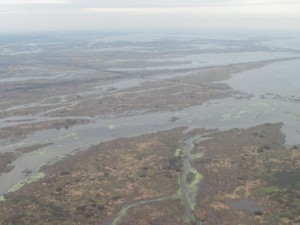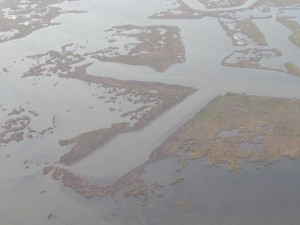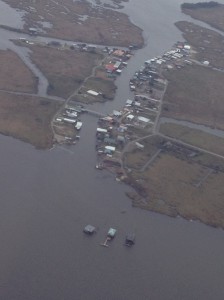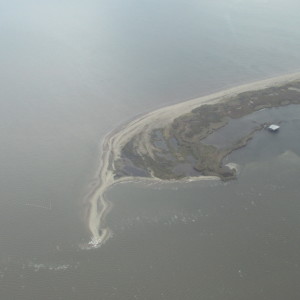2014 was an incredible year for G.U.L.F.! We made huge strides, and look forward to continuing to unite the Gulf seafood industry in 2015. Here are some of our biggest accomplishments from the past year:
1. Start of Marine Advancement Plans
The start of 2014 marked the launch of our Marine Advancement Plan (MAP) project. MAPs are a tool to communicate the sustainability of Gulf fisheries to retailers, restaurants, or other businesses who want to know detailed information about the sustainability and management of Gulf State fisheries. In addition, MAPs will also identify areas within state management where advancements can be made to be consistent with an international standard of sustainability, Food and Agriculture Organization Code of Conduct for Responsible Fisheries Management. We are currently working on six MAPs.
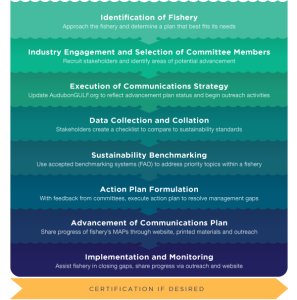
Texas Blue Crab
Texas Shrimp
Mississippi Blue Crab
Alabama Blue Crab
Florida Stone Crab
Florida Blue Crab
2. Launch of AudubonGULF.org
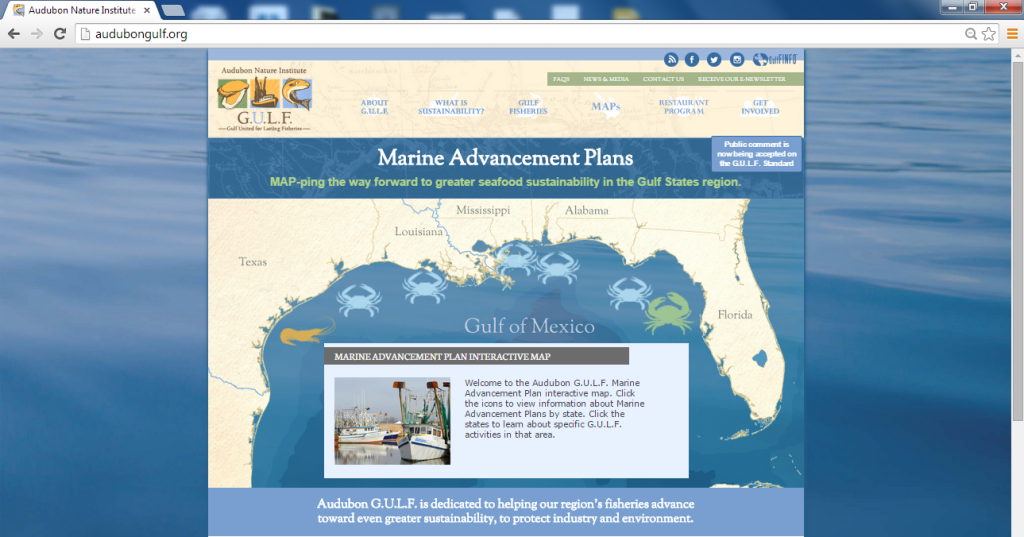
In March, we debuted our new website. Designed as a tool to educate businesses and consumers about sustainability and Gulf fisheries, AudubonGULF.org houses details about our work, species information, and the latest news and events pertaining to Gulf seafood. Check in regularly for updates on our projects.
3. Outreach and Industry Engagement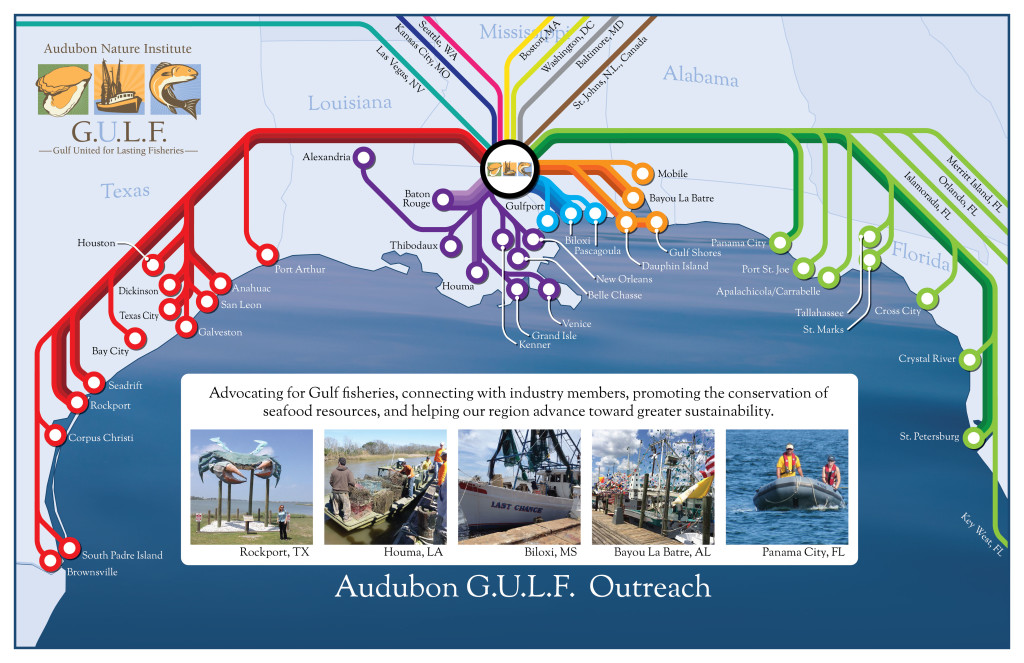
G.U.L.F. is a regional program dedicated to the sustainability of state fisheries across the Gulf Coast. It is our goal to do outreach and education, as well as industry engagement, across all five Gulf States. We were incredibly busy in 2014 to achieve this goal, and have been successful. At festivals and outreach events, we encourage consumers to support local, domestic Gulf seafood for its unique taste, high quality, and rigorous management that ensures its sustainability. We have traveled outside our region across the country to spread this message. During our travels we interview members of the industry, from harvesters to retailers, to hear their experiences with Gulf fisheries, how we can enhance the industry, and how they can get involved with our work.
4. Launch of Chef Council
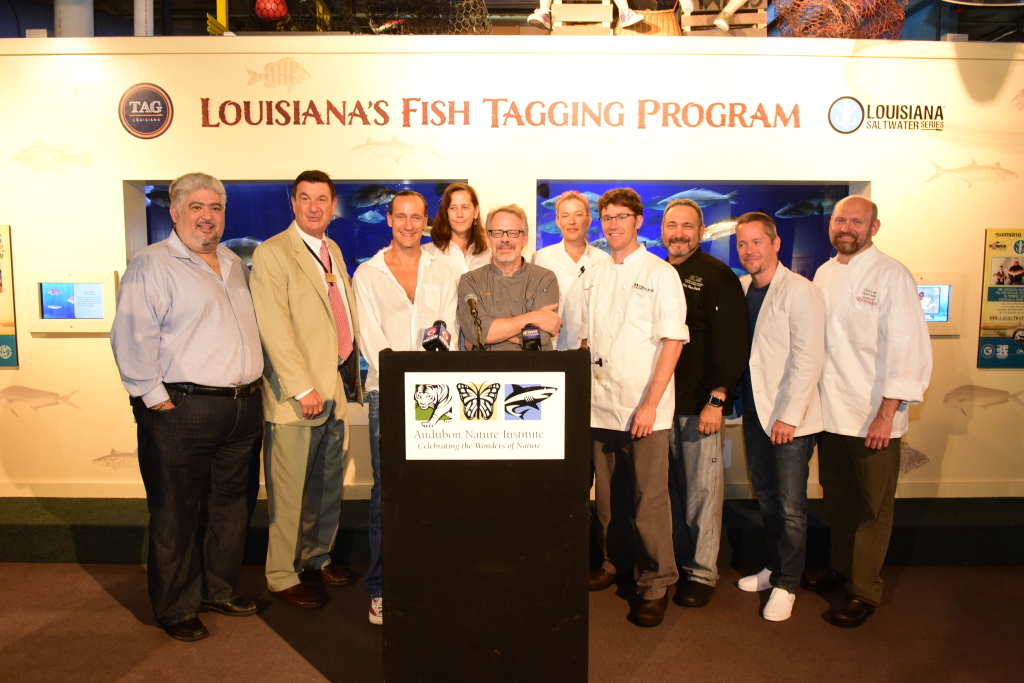
In October, G.U.L.F announced our formation of the G.U.L.F. Chef Council, a group of ten chefs dedicated to sourcing sustainable Gulf of Mexico seafood in their restaurants. Chaired by Chef Tenney Flynn of GW Fins, the Chef Council will partner with G.U.L.F. to act as a voice for promoting local, sustainable seafood.
5. G.U.L.F Certification Standard
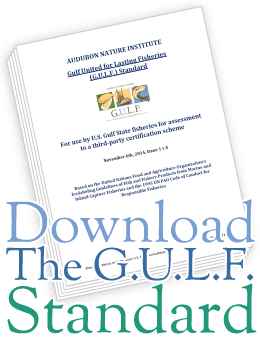
Over the last two years, G.U.L.F. has been working on developing a standard that will certify Gulf of Mexico fisheries as sustainable. In December, we opened the first draft of the standard to public comment to ensure voices from the industry could be heard as we continue to move forward with this project. The first round of comments will be accepted until February 5th. Send an email to gulf@auduboninstitute.org to submit your comment.
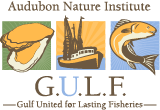
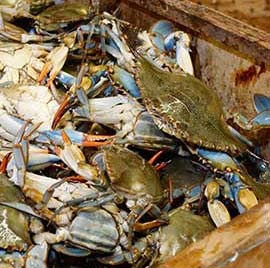 2015 marks the start of the assessment process for both Louisiana blue crab and oyster. The applications of the fisheries and timelines for the assessment are available on our
2015 marks the start of the assessment process for both Louisiana blue crab and oyster. The applications of the fisheries and timelines for the assessment are available on our 




